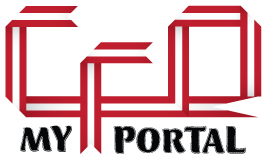Many times, you have a unique idea that you think can be the next breakthrough in your industry, but you don’t know how to go about it. A few months down the road, you see somebody else doing business using your idea.
All people are thinking and generating these ideas but there are only a few who take up the challenge of transforming their idea into a business. Did you ever think why is that? My analysis is that when it comes to the nitty-gritty, most of the people find it difficult to fully conceive the cycle of project development. And even if they know the fine details, they are overwhelmed by the amount of work and tasks to be performed.
So next time, whenever you have an idea, write it down and try to get the answers to the following questions:
- Is the idea technically feasible;
- Is there a market of the idea we are floating;
- The idea is financially feasible.
Once you are satisfied that the idea met the above criteria, the next phase is to weave the infrastructure around your idea. The first phase of the transformation will need the following:
- Product / Service development
- Corporate structure
- Office/admin infrastructure
Your top priority is to develop the product or service and test it in the market. You will only get the competitive advantage if you develop the product /service efficiently in a cost relatively lower than the market cost.
Once you are pretty sure that you have a competitive edge, the next step is to set up a corporate and administrative infrastructure. The corporate and admin infrastructure depend largely on the type of product /service, however, as an entrepreneur, your goal should be to keep these costs at a minimum level, at least in the first phase. There are many ideas you can use to keep your costs minimum such as:
- Many entrepreneurs use their basements as their first office; you may use shared space in the earlier period to reduce the costs
- Rather than hiring full-time staff and paying salaries, you may outsource many functions such as marketing, accounting, IT services such as emails, websites, etc.
If you are confident that the products/services are stable and can be offered to public at large. It is time to move to the next phase that is a full-scale phase. Estimate the market price of the product/service and cost of making that product or delivering that service. The difference between the price and variable cost is your estimated contribution margin (A). For instance, if your sale price is $100 and your variable cost is $65, the contribution margin will be $35 ($100 – $65)
Once you estimate the contribution margin, do the following calculation:
- Decide how much profit you would like to make (B). Let’s assume you want to make a profit of $50,000
- Estimate total fixed cost (C). Assume your fixed cost is $16,500
- Add your profit and fixed cost (D = B + C). So in this example, your profit and fixed costs will be $66,500
- Divide profit and fixed cost by contribution margin (D / A ). Dividing $66,500/$35 gives 1,900. So 1,900 is the number of products/services that you should sell to achieve a profit of $50,000
The calculations are easy but the real catch is in the implementation of the project. Wish you best of luck for the transformation of your ideas into business.
My CFO Portal www.mycfoportal.ca provides accounting, bookkeeping, tax, and CFO services to small and medium-size business at a very reasonable cost. We have highly qualified staff members with the experience in a verity of industries. We have developed very efficient system which can deliver service anywhere in Ontario.

